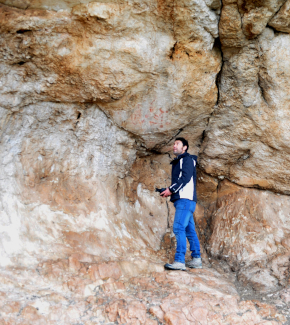
An international team of scientists, led by the University of Granada, has, for the first time, applied the study of palaeodermatoglyphs (ancient fingerprints) to the cave paintings found in the Los Machos rock-shelter (on the eastern slope of the Cerro de Jabalcón in Zújar, Granada)
An international team of scientists, led by the University of Granada (UGR), has determined for the first time the gender and age of the authors of cave paintings found in the Los Machos rock-shelter (on the eastern slope of the Cerro de Jabalcón in Zújar, Granada) by using fingerprint analysis.
Their study, published in the prestigious journal Antiquity, analysed the 32 prehistoric motifs painted in the Los Machos rock-shelter between 7,000 and 5,000 thousand years ago. The researchers identified fingerprints belonging to two different individuals in the paintings: an adult male, older than 36, and possibly a young woman or, more likely, a young individual who could be male or female.
Francisco Martínez Sevilla, a researcher at the UGR and the University of Alcalá de Henares, explains: “the identification of two individuals of different ages or genders opens up new horizons in the interpretation of rupestrian art and sheds light on the social context in which it was produced, most notably involving different members of the community. This study shows that the representations in these cave paintings were not limited to a specific group denoted by age or gender.”
This is the first application of palaeodermatoglyphic analysis to rupestrian art, demonstrating the major potential of this technique for studies of prehistoric art. These analyses were performed by the GROB Research Group on Osteobiography, coordinated by Professor Assumpció Malgosa.
Palaeodermatoglyphs—fingerprints found in archaeological contexts—are ancient skin-prints left accidentally (or even deliberately) on different materials, including the walls of prehistoric caves (such as those at Los Machos) or on ceramic surfaces.
Where the fingerprints are well conserved, their examination enables the gender and age of their owners to be identified via the analysis of papillary ridges, which are the linear raised epidermal ridges interspersed with grooves in the rounded part of the fingertip. There are differences between the genders in both the number of ridges and their width, because men have larger ridges than women.
There are also age-related features because, although the fingerprint pattern does not change during a person’s lifetime, the distance between the ridges increases during growth and stabilises in adulthood. Comparing archaeological fingerprints with present-day samples enables the gender and age of the individual to be defined within a range of probability.
Cave paintings are perhaps one of humanity’s most universal symbolic expressions. Research in this area to date has focused on the study of the motifs represented, their meaning, their geographical distribution, and their dating. But the question of authorship—who exactly painted or etched these marks—is particularly fascinating for researchers. Being able to ascertain the gender and age of the authors of these pictorial representations can provide an insight into the social context in which they were made—that is, whether they were the result of individual expression or created by various members of the community.
Analysis of the cave and the pictorial panel
“In this project, we conducted an interdisciplinary study of the ‘schematic art’ on the panel [rock surface] of the Los Machos rock-shelter. ‘Schematic’ art is one of the three styles of rupestrian art defined in the late prehistoric Iberian Peninsula, together with ‘Levantine’ and ‘Macro-Schematic’. Schematism is a pictorial style that appears throughout the Peninsula and dates from the Early Neolithic to the Copper Age (mid-6th Century to 3rd Century BC),” explains Martínez Sevilla.
The researchers’ examination of the rock-shelter and the pictorial panel included: an analysis of its geological morphology (which accounts for the paintings’ state of conservation and durability over time); the techniques used in the application of the paint; the regional archaeological context; the dating that could be attributed; and identification of the biological profile of the authors of the paintings by means of palaeodermatoglyphic analysis.
Also participating in the study along with Francisco Martínez Sevilla were Meritxell Arqués, Xavier Jordana, and Assumpció Malgosa (Autonomous University of Barcelona), José Antonio Lozano Rodríguez, Margarita Sánchez Romero, and Javier Carrasco Rus (University of Granada), and Kate Sharpe (University of Durham, UK).
On the pictorial panel of the Los Machos rock-shelter, a total of 32 painted motifs were identified, the majority of which comprise anthropomorphic, circular, and geometric figures. The paintings are likely to have been preserved in their entirety, as evidenced by the geomorphological study and their layout on the rock surface. The superposition of the figures and the different pigment tones suggest that the paintings were made in two phases, which could represent two distinct chronological episodes.
«Our analysis of the width of the outlines enabled us to confirm that the pigment was applied with fingers and that the fingerprints pertained to Phase 2, the most recent, in which a dark ochre pigment was used,» the authors conclude.
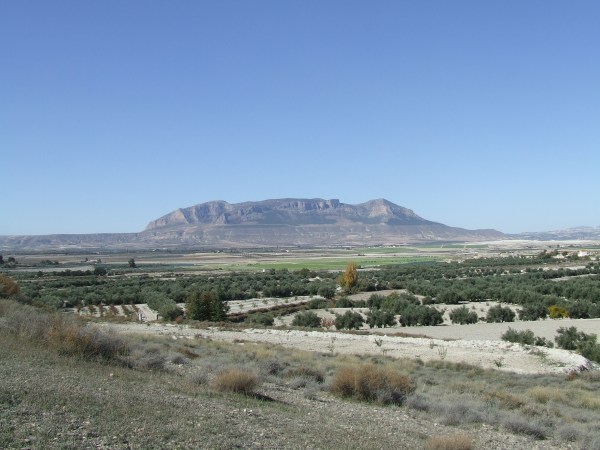
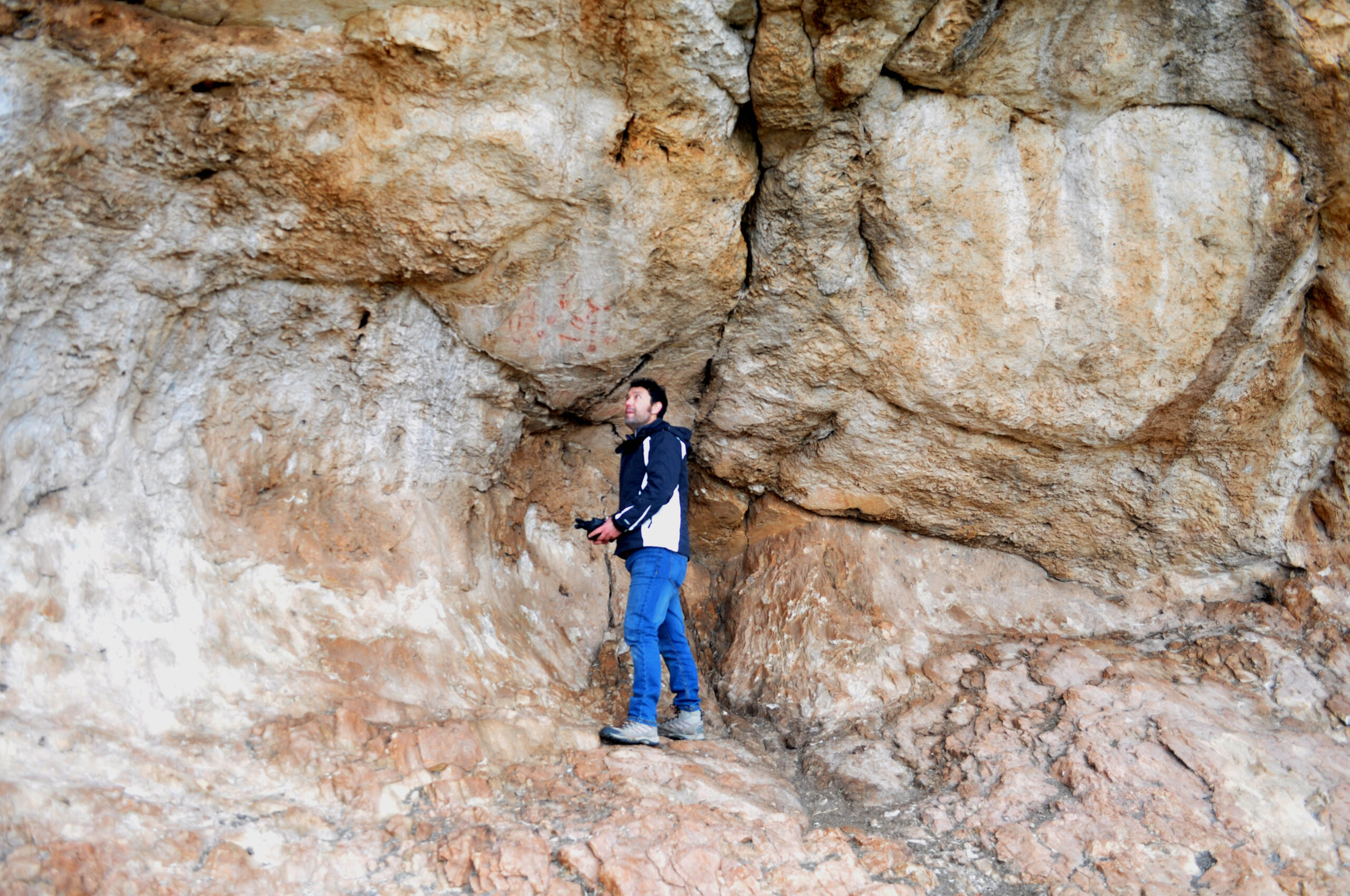
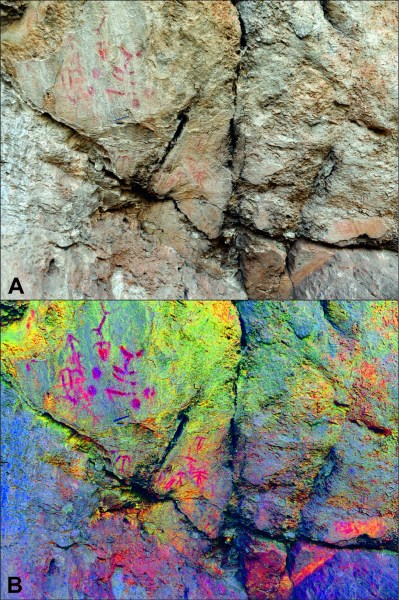
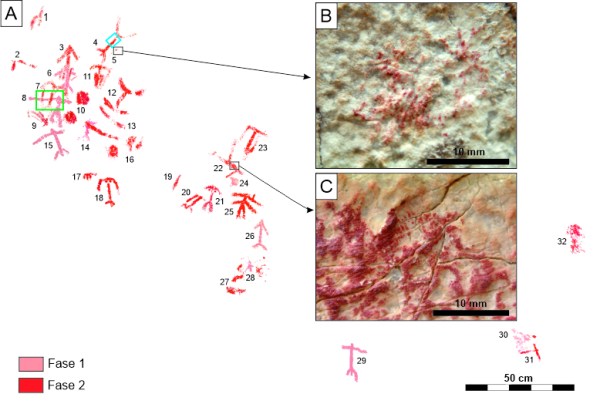
Bibliography:
Martínez-Sevilla, F., Arqués, M., Jordana, X., Malgosa, A., Lozano Rodríguez, JA, Sánchez Romero, M., Sharpe, K., and Carrasco Rus, J. (2020), ‘Who painted that? The authorship of Schematic rock art at the Los Machos rock-shelter in southern Iberia’. Antiquity, 1–19. DOI: https://doi.org/10.15184/aqy.2020.140
Media enquiries:
Francisco Martínez Seville
Research Group for the Study of Recent Prehistory in Andalusia (GEPRAN)
Department of Prehistory and Archaeology, University of Granada
Assistant Professor (tenure track), University of Alcalá (Alcalá de Henares, Madrid)
Prehistory Seminar, Department of History and Philosophy.
Email: @email



